
Apples
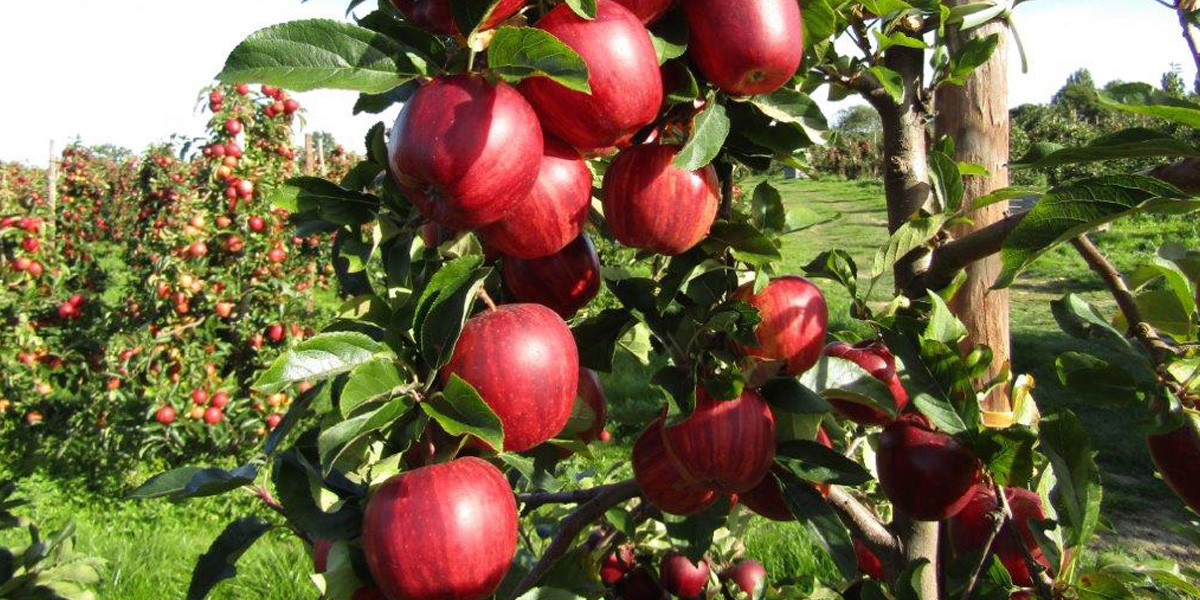
We cultivate a wide variety of apples, including Kissabel varieties such as Rouge, and have recently introduced new plantings of Pink Lady. To stay at the forefront of quality and innovation, we continuously trial new varieties. Our goal is to produce grade 1, 'top supermarket quality' apples. Those that fall short of this standard are thoughtfully repurposed for juicing, ensuring minimal waste.
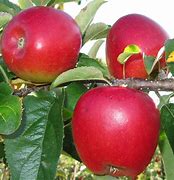 The Jazz Apple stands out as one of the UK's top-selling eating apples and has frequently been crowned 'Britain's Tastiest Apple' at the prestigious Fruit Show.
The Jazz Apple stands out as one of the UK's top-selling eating apples and has frequently been crowned 'Britain's Tastiest Apple' at the prestigious Fruit Show.
Uses: A delightful eating apple, especially popular with children for its sweet taste and crisp texture.
Origin: A cross between Royal Gala and Braeburn (both descendants of the renowned Cox’s Orange Pippin), the Jazz Apple was first propagated in New Zealand in 1985. It inherits its sweet, rich flavour from the Braeburn and its satisfying crunch from the Royal Gala.
Colour: A stunning blend of yellows and reds that catches the eye.
Character: Small but mighty, the Jazz Apple boasts a crisp, dense texture and excellent storage qualities, making it a reliable favourite.
Flavour: Experience a zingy sweetness with a sparkling, champagne-like quality that dances on the taste buds. Often described as having a pear drop-like flavour, the Jazz Apple offers a uniquely refreshing taste experience.
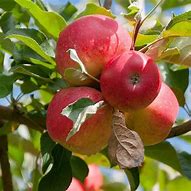 We cultivate a variety of vibrant red Gala apples, including Brookfield, Galaxy, and Schniga. These are among the best-selling eating apples in the UK.
We cultivate a variety of vibrant red Gala apples, including Brookfield, Galaxy, and Schniga. These are among the best-selling eating apples in the UK.
Uses: Perfect as a fresh eating apple, Gala apples can also be added to salads, cooked, or used to create delicious sauces.
Origin: A cross between Golden Delicious and Kidd's Orange Red, Gala apples were first planted in New Zealand and have been grown commercially in the UK since the 1980s.
Colour: Typically red with greenish or yellow-green vertical stripes adding character.
Character: Small and firm with thinner skins than most apples, yet surprisingly resistant to bruising.
Flavour: Crisp, sweet, and aromatic with a mild, appealing taste.
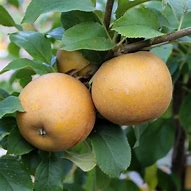 The Egremont Russet is a classic English russet apple that harks back to the Victorian era, admired for its unique flavor and versatility.
The Egremont Russet is a classic English russet apple that harks back to the Victorian era, admired for its unique flavor and versatility.
Uses: Primarily enjoyed as an eating apple, it also pairs beautifully with savoury salads and cheeses, making it a favourite among culinary enthusiasts.
Origin: First documented in 1872, this apple is thought to have been cultivated by the Earl of Egremont at Petworth in Sussex, solidifying its place in English heritage.
Colour: A warm, dull orange-yellow hue covered in russeting lends it a rustic charm.
Character: Medium in size, the Egremont Russet features a thin, dry skin that encases pale cream-colored flesh. Its texture is moist, though not overly juicy, providing a satisfying bite.
Flavour: Known for its delicate, nutty flavour, the Egremont Russet is both sweet and dry, evoking the taste of a firm pear—a true delight for the palate.
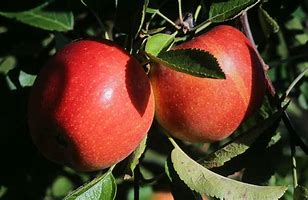 The Braeburn apple, with its origins in New Zealand, carries an air of mystery due to its unknown parentage. However, it is widely believed to be a relative of the Lady Hamilton and Granny Smith apples, both of which were present in the orchard where it was first discovered.
The Braeburn apple, with its origins in New Zealand, carries an air of mystery due to its unknown parentage. However, it is widely believed to be a relative of the Lady Hamilton and Granny Smith apples, both of which were present in the orchard where it was first discovered.
Uses: An excellent choice for both eating fresh and cooking. Its versatility makes it suitable for a range of dishes.
Origin: Introduced to the UK in the 1950s, the Braeburn apple has become a beloved addition to British orchards and kitchens.
Colour: The Braeburn features a striking red and orange streaky pattern set against a yellow-green background. Its colour intensity can vary depending on growing conditions.
Character: Firm to the touch with a crisp, juicy interior and a thin yet durable skin, this apple offers a satisfying texture.
Flavour: Boasting a distinctive aromatic profile, the Braeburn balances sweet and tart notes beautifully. When cooked, its flavour mellows slightly, complementing both sweet and savoury dishes. Enjoyed raw, it is best served slightly chilled and is perfect for adding to salads, sandwiches, or a cheese board.
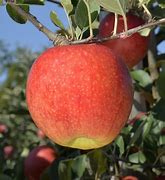 The Daliclass apple is a relatively new variety that has quickly gained attention for its appealing flavour and vibrant appearance.
The Daliclass apple is a relatively new variety that has quickly gained attention for its appealing flavour and vibrant appearance.
Uses: Primarily an eating apple, the Daliclass is enjoyed for its sweet and tangy taste.
Origin: This French cultivar, introduced in 2010, is a cross between Elstar and Pilot apples, descending from the renowned Orange Pippin lineage.
Colour: With a striking red and orange flush, the Daliclass boasts a beautiful skin that contrasts with its white to pale yellow flesh.
Character: Medium-sized, this apple has a balanced and attractive form.
Flavour: Known for its sweet yet sharp taste, the Daliclass offers a refreshing flavour profile that appeals to many.
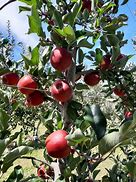 The Kissabel family, developed in France, offers a stunning range of apples with vibrant flesh and exceptional flavour, each variety bringing its own unique charm.
The Kissabel family, developed in France, offers a stunning range of apples with vibrant flesh and exceptional flavour, each variety bringing its own unique charm.
Kissabel Rouge
Uses: Perfect for fresh eating, offering a delightful sensory experience. Origin: Developed over two decades by French breeders, combining wild red-fleshed apples with premium-quality varieties. Colour: Bold red skin with vibrant red flesh, making it visually striking. Character: Juicy, firm, and naturally elegant. Flavour: A beautifully balanced mix of sweetness and tartness with a rich, satisfying taste.
Kissabel Jaune
Uses: Ideal as a fresh eating apple or as an addition to fruit salads, adding a bright and colourful touch. Origin: Part of the Kissabel breeding program, featuring the same French heritage. Colour: Golden-yellow skin with soft pink flesh, offering a subtle yet intriguing appearance. Character: Crisp and juicy, with a pleasantly light texture. Flavour: Sweet with delicate floral notes, making it a refreshing choice.
Kissabel Orange
Uses: Excellent for eating raw or incorporating into both sweet and savoury dishes. Origin: Developed alongside its Rouge and Jaune siblings, combining innovation with natural appeal. Color: Warm orange-hued skin with flesh that ranges from soft pink to pale orange. Character: Dense, firm, and satisfying to bite into. Flavor: A balanced profile with sweet, citrusy hints and a gentle tartness for complexity.
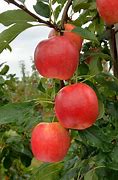 The Monalisa apple shares many qualities with the Jazz apple, but with a distinctive advantage—it ripens six weeks earlier, making it a fresh and convenient choice straight from the tree.
The Monalisa apple shares many qualities with the Jazz apple, but with a distinctive advantage—it ripens six weeks earlier, making it a fresh and convenient choice straight from the tree.
Uses: Primarily enjoyed as a fresh eating apple, the Monalisa apple delights with its crisp and juicy texture.
Origin: Developed for its early ripening quality, the Monalisa apple is a modern variety, bred to enhance the convenience of early harvests and fresh enjoyment.
Colour: Featuring a bright and vibrant blend of red and yellow tones, the Monalisa apple is as appealing to the eye as it is to the palate.
Character: Firm and crunchy, this apple is packed with juice and has a delicate yet robust skin, making it ideal for snacking.
Flavour: Sweet and well-balanced, the Monalisa apple offers a clean, refreshing taste with a subtle hint of tartness that lingers pleasantly.
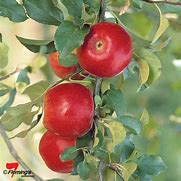 The Crimson Crisp apple is a widely loved variety, celebrated for its striking red appearance and satisfyingly crisp texture. It’s ideal for those who appreciate a harmonious blend of sweetness and tartness in their apples.
The Crimson Crisp apple is a widely loved variety, celebrated for its striking red appearance and satisfyingly crisp texture. It’s ideal for those who appreciate a harmonious blend of sweetness and tartness in their apples.
Uses: Primarily enjoyed as a fresh eating apple, the Crimson Crisp is also excellent for adding a vibrant crunch to salads or serving as a healthy snack.
Origin: This modern variety was developed through careful breeding to produce an apple with excellent flavor, texture, and visual appeal.
Colour: True to its name, the Crimson Crisp apple boasts a deep, vibrant red hue that makes it as visually appealing as it is delicious.
Character: The apple's flesh is firm and dense, offering a refreshing crunch with every bite. Its skin is durable yet thin, enhancing the overall eating experience.
Flavour: The Crimson Crisp delivers a well-balanced flavor, combining sweetness with just the right amount of tartness for a refreshing and enjoyable taste.
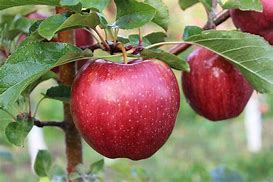 The Cameo apple is a contemporary favourite, celebrated for its versatility, crisp texture, and exceptional flavour.
The Cameo apple is a contemporary favourite, celebrated for its versatility, crisp texture, and exceptional flavour.
Uses: Equally at home in sweet and savoury dishes, the Cameo apple is perfect for eating fresh or cooking. Its resistance to browning makes it an ideal choice for sandwiches, salads, and garnishes, while its dense flesh holds up wonderfully when cooked.
Origin: Discovered serendipitously by the Caudle family in an orchard in Dryden, Washington, in 1987, the Cameo apple is believed to descend from Red Delicious and Golden Delicious apples.
Colour: Boasting a stunning red-striped skin against a yellowish backdrop, the Cameo apple's vibrant appearance develops just before harvesting. Picking at this precise moment ensures its skin remains thin and delicately textured—a signature characteristic.
Character: The Cameo's dense, creamy white-to-yellow flesh is crisp and juicy, offering a satisfying bite and excellent texture.
Flavour: Striking a perfect balance of sweet and tart, the Cameo apple carries subtle nuances of honey and citrus, making it a standout choice for diverse culinary creations.
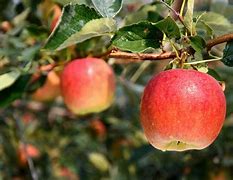 The Smitten apple is an irresistible favourite, celebrated for its vibrant flavour, stunning appearance, and culinary versatility.
The Smitten apple is an irresistible favourite, celebrated for its vibrant flavour, stunning appearance, and culinary versatility.
Uses: Perfect for eating fresh, this apple also shines when blended with other varieties in cider production. Pair it with cheese or peanut butter for a delightful snack, or incorporate it into desserts and savoury dishes, such as pork or chicken recipes.
Origin: The quest for the world’s most irresistible eating apple began in New Zealand and culminated in the creation of Smitten. First grown in 1995 but officially named in 2010, its lineage includes the esteemed Falstaff, Fiesta, Braeburn, and Gala apples.
Colour: Smitten boasts brilliant white flesh complemented by a yellow base and a charming blush, making it as visually appealing as it is delicious.
Character: Large and naturally beautiful, this apple combines a healthy, flavourful profile with an unbelievably crunchy texture that satisfies with every bite.
Flavour: The Smitten apple offers a sweet taste with a subtle hint of tartness. Its nuanced flavour carries delightful notes of cider, flowers, oranges, and wine, remaining delicate rather than overpowering.
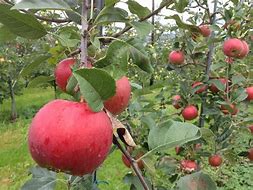 The Ladina apple, also known as Scarlet Paradise, is a flavour-packed Swiss dessert apple that has quickly gained popularity since its development in the early 2000s.
The Ladina apple, also known as Scarlet Paradise, is a flavour-packed Swiss dessert apple that has quickly gained popularity since its development in the early 2000s.
Uses: Primarily enjoyed as an eating apple, Ladina is perfect for those who appreciate sweet and flavourful fruit.
Origin: Created in 1999 as part of a breeding program in Wädenswil, Switzerland, the Ladina apple is a cross between the Topaz and Fuji varieties.
Colour: With its striking appearance, the Ladina apple features a bright red hue that covers 80% of its skin.
Character: This apple’s yellowish flesh is firm and finely grained, delivering a delightful texture with every bite.
Flavour: The Ladina apple offers a sweet and juicy taste with delicate notes of peach and lychee, making it a refined and satisfying choice.

